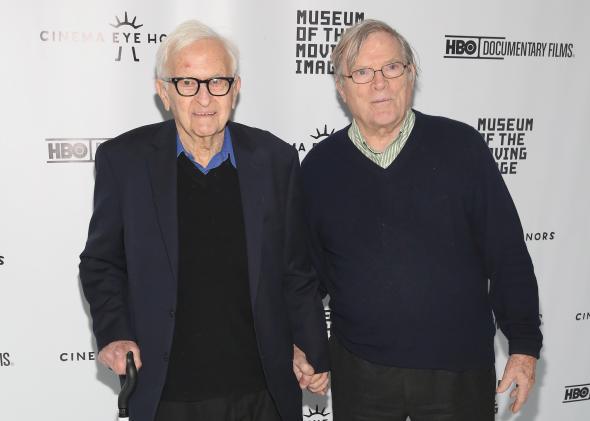In the 1960s, siblings Albert and David Maysles helped pioneer the techniques of cinema verité in a form of documentary film that they liked to call “direct cinema.” Adapting new, portable 16mm cameras so that Albert could shoot picture while David recorded sound, the brothers placed themselves in the heart of the action—on location with Orson Welles in Madrid, on the primary campaign trail with JFK, at Idlewild Airport for the Beatles’ first touchdown in the U.S.
Along with contemporaries D.A. Pennebaker, Ricky Leacock, Robert Drew, and Frederick Wiseman, the Maysles brothers liberated documentary from the presentational format of the newsreel and the talking head. They crafted compelling narratives by capturing real-life drama enacted by real people, from Bible salesmen (in 1969’s Salesman) to the Beales (in 1975’s Grey Gardens) to the world’s greatest rock ’n’ roll band.
Direct cinema’s influence on nonfiction filmmaking was so extensive that the style is now virtually indistinguishable from the form itself. But it’s worth remembering that the movement would not have been possible without the technical innovations that made motion picture cameras lightweight enough to be handled deftly by, say, a diminutive psychology teacher from Brookline, Mass., which is what Albert Maysles was when he made his first film.
David Maysles died in 1987, but Albert continued shooting and making movies pretty much until yesterday, when he, too, passed away. I worked in production with Albert at Maysles Films for three years at the turn of the millennium, a time when his passion for the possibilities of nonfiction filmmaking was reignited by another technological revolution: that of the digital camera.
Throughout his career, Albert remained a bit of a techie. Always adapting his gear for the field, he once glued a small circular mirror to an elbowed metal rod, which he then secured with electrician’s tape to the bottom of his old Bach Auricon so he could see what was going on behind him while he was rolling.
I took a look and told him that it didn’t work—the image in the mirror was blurry. He grinned broadly as he replied that he had found a reflective lens that matched his eyeglasses prescription. I’m still not sure if he was having me on.
Early in 2000, Albert got his hands on Sony’s PD150, a very lightweight, truly handheld DV camera capable of recording high-quality picture and sound in a digital format. Yes, he beamed like a kid with a new toy, but he also spoke with the conviction of a visionary when he said that such cameras would usher in a new wave of documentary film by granting shooters unprecedented freedom, access, and opportunity.

Photo by Larry Busacca/Getty Images
It’s difficult to convey how ludicrous this sounded back then, before we all carried phones that take substantially better pictures than Al’s PD150. For every day’s shooting, we incurred tens of thousands of dollars of film stock and processing fees. We did so because video just looked cheesy. How could a movie have an impact if it had all the visual appeal of the local weather report? If you wanted to make an enduring, serious picture, you had to shoot in film, and you had to find a way to finance it. And before just about everybody else, Albert knew all that was about to change.
Within a year, he was in Rome with his PD150 shooting Martin Scorsese and his crew on the set of Gangs of New York, one part of a series commissioned by the Independent Film Channel titled With the Filmmaker.* It was, I believe, one of the very first programs shot in digital video format to be aired on a serious cable channel.
Before citizen journalists, before YouTube, Albert was giddy over the prospect of more cameras in more hands recording more unexpected moments. Albert’s camerawork features in some of American cinema’s most iconic documentaries because he always kept this eye for action. He understood the documentary cinematographer’s art to be primarily that of the storyteller, and he always believed that what he captured was related, not inconsequentially, to the truth.
*Correction, March 7, 2015: This article originally misstated that Albert Maysles was in Rome shooting Wes Anderson on the set of The Life Aquatic With Steve Zissou. He was shooting Martin Scorsese on the set of Gangs of New York.
*Correction, March 9, 2015: This post originally misspelled Martin Scorsese’s last name.
